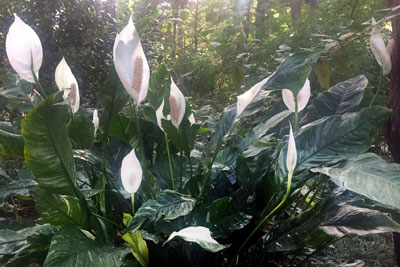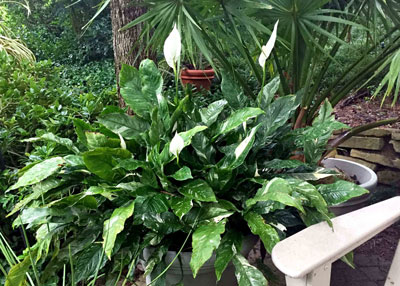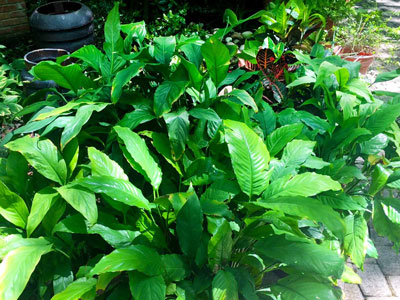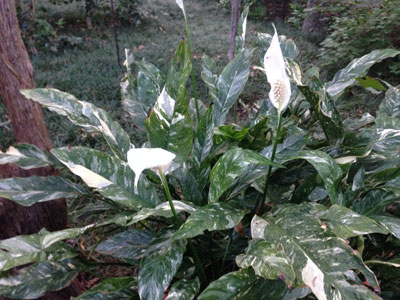From the Sperry Garden: Peace Lilies

Photo: There’s a special peace to peace lilies when the sun’s rays come shining through.
They aren’t really lilies – not even close. They’re related to caladiums, anthurriums, philodendrons, dieffenbachias, aglaonemas and other plants with the unusual Jack-in-the-pulpit style blooms. But spathiphyllums do bring a feeling of tranquility and peace to their parts of your landscape when they come into bloom in May and June and are still blooming 10 or 12 weeks later.

Photo: Arm of chair gives good indication of height and width of mature peace lily plant.
Make no mistake: these are not outdoor plants you can set into the ground and leave forever. They can’t handle freezing weather, so you’re going to have to bring them indoors or into a greenhouse for the winter. But they’re some of the very easiest of all houseplants to keep through the cold months. All they ask is occasional water and enough light to keep them going until spring. Nothing elaborate.
We have 20 or more spathiphyllums. Many are green-leafed, many the old favorite called Mauna Loa. They’re 24 inches tall and wide. I’ve divided them a couple of times, eventually potting them into large 18- or 20-inch decorative pots. Oh, that’s not completely true. I have enough that some are even growing in 7-gallon black nursery pots. I can stick them behind other container plants in our shade beds so that the less-than-beautiful pots don’t show.

Photo: Recently divided peace lilies are ready to be potted into large patio pots in which they will grow and bloom for 5-6 years.
You’ve seen me reference the variety Domino. It has variegated foliage. There actually are several types of spathiphyllums with these nicely marked leaves. The good thing about them is that they’re colorful even when they finish their bloom time.

Photo: This handsome example of Domino has spent many summers in various parts of our landscape. In winters it goes back into the greenhouse.
Basic Care Needs…
This list will be short!
• Shade. No direct sunlight.
• Highly organic potting soil. No native Texas soil.
• Consistently moist. Do not let plants wilt or you’ll end up with edge burn to leaves.
• Fertilize with high-nitrogen, water-soluble plant food.
• Protect from freezing weather.
• Trim off old flowers when they turn from white to lime green.
• No real pest problems, but keep your eyes open just the same.
